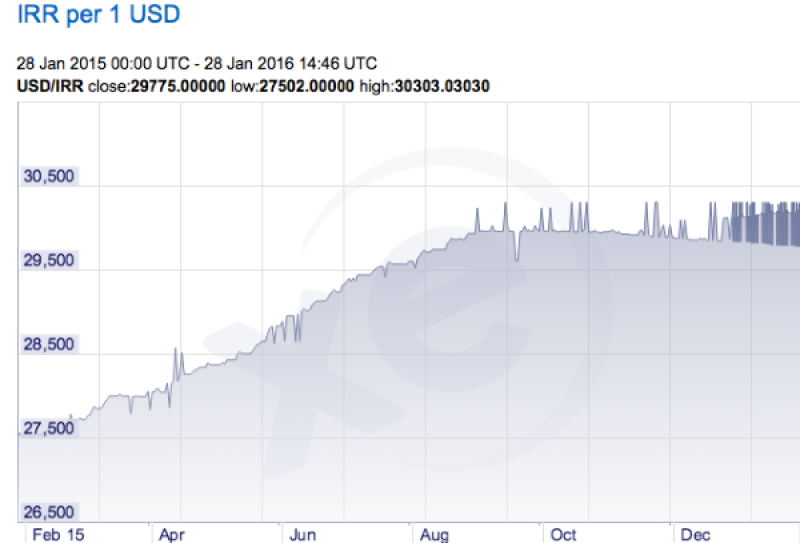Iranian president Hassan Rouhani |
Iranians thought this day would never come – crippling economic sanctions have been lifted, Western countries are welcoming trade delegates from Tehran to talk business and president Hassan Rouhani is signing billion-dollar deals for Iran to buy jets and manufacture cars.
The future looks brighter for Iran and has piqued the interest of international investors.
Switch on money tap
Dominic Bokor-Ingram, portfolio adviser at Charlemagne Capital, believes "a lot" of investment is going to flow into the country, as Iranian companies start spending once again on capital expenditure.
"They have been starved of an export route, but Iran manufactures things the rest of the region needs," he says. "Now that they can export again, we will see companies investing – that will be a combination of foreign money and also domestic money."
Charlemagne Capital has teamed up with Iranian investment firm Turquoise Partners to launch the Cyprus-domiciled Turquoise Variable Capital Investment Fund. Since its launch in mid-December, the fund has assets under management of around €48 million from European and UK investors and is up almost 14%, according to Bokor-Ingram.
Sky-high yields are what makes Iran attractive to investors – even just depositing funds in an Iranian bank account can yield real returns of 20%, due to high interest rates. Bond yields are nudging 24%, says Bokor-Ingram, and a dedicated wealth manager can achieve returns of about 30%, says Emad Mostaque, strategist at emerging markets (EM) research consultancy Ecstrat.
Stable rial
The simple carry trade – borrowing in a currency with low interest rates such as US dollars and investing in higher yielding Iranian securities – works only as long as the exchange rate remains constant.
Oil revenues account for around 10% of GDP. Renaissance Capital forecasts a total $54 billion of export receipts and capital inflows to Iran in 2016, and perhaps another $10 billion in 2017, which it predicts will counteract falling oil prices. It also reckons the 8% annual average target of the government’s 2016-21 five-year plan might be achievable.
Mostaque predicts the Iranian rial will remain stable, in contrast to neighbouring oil-producing countries whose currencies have come under pressure as the price of oil plunges to new lows. Iran has a diversified economy and is capable of exporting a wide category of goods, from steel, petrochemicals and fertilizers to pistachios, saffron and, of course, Persian rugs.
However, market participants agree the rial's appreciation prospects are poor, and it might even fall in value.
Ramin Rabii, chief executive officer at Turquoise Partners, believes it will take a few years before there is significant foreign direct investment in Iran, due to years of sanctions and local bureaucracy.
"Demand for local currency from foreigners will not be that significant," he says. "There will be some demand, but not to the point that [it can appreciate] in the next few months or years."
The drop in commodity prices is putting Iran's budget under pressure, despite its diversified economy, and it might even be in the interest of the government to devalue the rial, predicts Rabii.
Clean up exchange rate
Years of punishing sanctions put pressure on the rial, and led to a black-market exchange rate. The official exchange rate, as set by the Central Bank of Iran, is approximately 30,000 rials to the dollar, but the black-market rate is closer to 36,000. The next step for Iran is to eliminate this dual system, says Rabii.
"Now, the official policy of the central bank is to once again have a single rate after sanctions are lifted," he says. "In the first six months post-sanction, [it wants to] try to bring the two rates together. Whether the official rate moves up or the free rate move down, nobody knows."
Charlie Robertson, EM specialist at Renaissance Capital and head of the macro-strategy unit, estimates they could align at 32,000 to 33,000.
Furthermore, there is talk of the central bank developing a currency forward market. A well-functioning derivatives market can have a stabilizing effect on a currency and attract foreign investors, but Rabii says this has been in the works for a while.
"They have been talking about it for years – as long as I can remember," he says. "If you ask me how optimistic I am [about this happening] in the next year, I am very pessimistic. This is more of a longer-term trend. It's not going to happen in the short term."
Sanction snapback
Despite the country's recent progress, investors remain cautious on Iran for a multitude of reasons, says Hasnain Malik, head of frontier markets strategy for MENA and South Asia research at boutique investment bank Exotix. Exotix does not market Iranian securities to its clients.
"US sanctions are still there – they are just suspended – and there are significant restrictions from the US institutional investor standpoint from either travelling to Iran or getting through the hurdles to invest in Iran," he says.
The threat of Iran breaching the terms of its nuclear agreement and being hit with a "sanction snapback" is a concern. The upcoming US election adds to the uncertainty facing investors – a win for Republican candidate Donald Trump would almost certainly be a loss for US-Iranian relations.
Furthermore, it is not yet possible to have sub-custodian arrangements in Iran. Investors have to make do with Iran's Central Securities Depository, but international investors are accustomed to dealing with the local branch of global custodian banks such as HSBC or State Street.
It is unlikely there will be a sugar rush of international money flowing into Iran, but market participants estimate between $500 million to $2 billion of foreign money finding its way into Iran over the next year.

|
Source: XE |